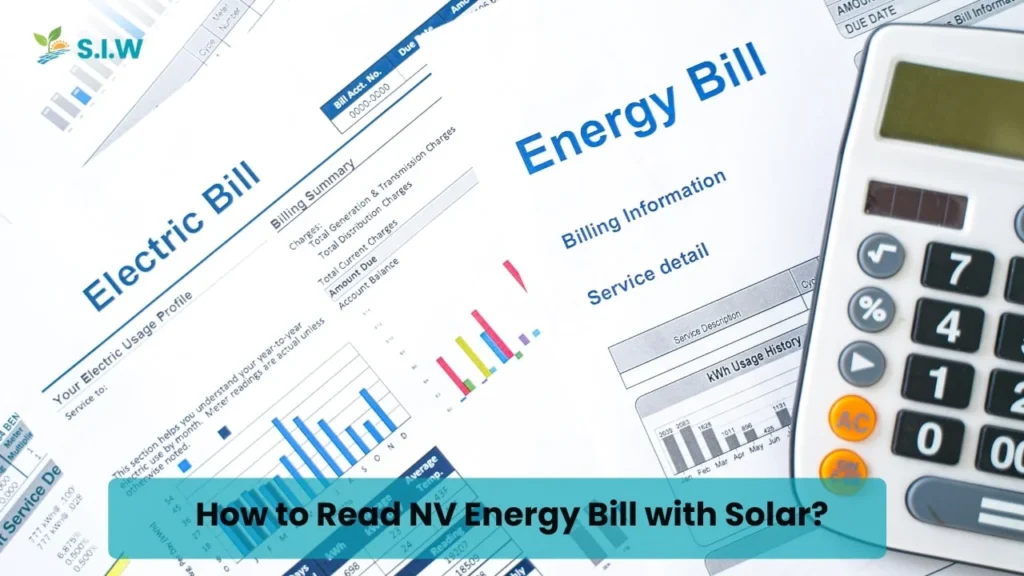Understanding your NV Energy bill can be confusing, especially if you have a solar energy system installed. This guide will help you decipher your bill, focusing on how solar energy impacts your charges and savings.
How to Read NV Energy Bill with Solar
Reading your NV Energy bill involves knowing the various components and how they interact with your solar system. Whether you’re a new solar customer or have been using solar for a while, this article breaks it down in easy-to-understand terms.
Understanding Your Energy Bill
When you receive your NV Energy bill, you might see several charges and credits. Here’s a quick breakdown of the main sections:
- Total Amount Due: The total amount you owe for that billing cycle.
- Usage Charges: This reflects the kilowatt-hours (kWh) you’ve used during the billing period.
- Solar Credits: If you have a solar system, this section shows the credits you earn from generating excess energy.
- Net Metering Adjustment: This indicates the difference between the energy you consume and the energy your solar system generates.
How Solar Systems Impact Your Bill
Now that we understand the basics of the bill, let’s explore how an 8 kW solar system specifically influences it.
Benefits of an 8 kW Solar System
- High Energy Output: An 8 kW system can produce a significant amount of electricity, especially in sunny regions. This can drastically lower your usage charges.
- Increased Savings: With the energy generated, your reliance on the grid diminishes, leading to lower overall bills.
- Tax Incentives: Installing solar can make you eligible for federal tax credits, further reducing your expenses.
The Components of Your Bill
Understanding each component can help you make sense of your overall energy costs. Here’s a more detailed look:
1. Total Amount Due
This is the amount you need to pay by the due date. It’s essential to pay this amount on time to avoid late fees.
2. Usage Charges
This reflects your total energy usage for the billing cycle. With solar panels, this number can be significantly reduced if your system generates enough electricity to meet your needs.
3. Solar Credits
If your solar system generates more electricity than you use, NV Energy will credit you for the excess. This is particularly beneficial during sunny months when solar production is high.
4. Net Metering Adjustment
This adjustment reflects any surplus energy you’ve sent back to the grid versus what you’ve drawn from it. If you produce more than you use, you’ll see a credit here, which helps reduce your overall bill.
Personal Experience: Understanding My Bill
When I first installed my solar panels, my NV Energy bill was daunting. However, after a few months, I started to notice the impact. My usage charges decreased as I relied more on my solar system. Seeing the solar credits and net metering adjustments made my bill much easier to read. It was a learning process, but now I feel empowered every time I review it.
Monitoring Your Solar Production
To get the most out of your solar system, keep track of your energy production and how it correlates with your bill. Most solar inverters come with monitoring apps that allow you to see how much energy your system generates in real time.
Building a Solar Farm
If you are considering larger solar investments, building a solar farm might be an option. Solar farms allow you to generate energy on a larger scale, often leading to greater savings and even revenue from selling excess energy back to the grid.
Steps to Building a Solar Farm
- Research Local Regulations: Ensure you comply with local laws and obtain necessary permits.
- Find the Right Location: Look for land that receives ample sunlight and is near existing power infrastructure.
- Choose Quality Panels: Investing in high-quality panels, such as Tesla solar panels, can maximize your output.
- Connect with Utility Companies: Establish a connection to sell excess power back to the grid.
The Role of Tesla Solar Panels
Tesla solar panels are renowned for their efficiency and sleek design. When included in your solar system, they can help you optimize energy production.
Benefits of Tesla Solar Panels
- Efficiency: Tesla panels have one of the highest efficiency ratings in the industry, meaning you get more energy from less space.
- Aesthetics: Their low-profile design is visually appealing and complements various home styles.
- Integrated Solutions: Tesla offers a full range of energy solutions, from panels to battery storage, making it easy to create a cohesive energy plan.
FAQs About Reading NV Energy Bill with Solar
Q1: What is net metering, and how does it affect my bill?
Net metering allows you to receive credits for the surplus energy your solar system generates and sends back to the grid. This reduces your total energy costs.
Q2: How can I maximize my solar credits?
To maximize solar credits, ensure your system is properly sized and installed. Regular maintenance can also help optimize performance.
Q3: Do I still receive a bill if I have solar panels?
Yes, you may still receive a bill, but it will likely be much lower due to the energy generated by your solar panels.
Q4: What happens if my solar system produces more energy than I use?
If your system generates excess energy, you’ll receive credits on your bill, which can offset future energy costs.
Q5: How do I know if my solar system is performing efficiently?
Most solar inverters come with monitoring tools. Regularly check these tools to ensure your system is performing as expected.
Conclusion
Understanding how to read your NV Energy bill with solar is crucial for maximizing savings and ensuring your system works efficiently. By monitoring your usage, understanding solar credits, and considering future investments like an 8 kW solar system or Tesla solar panels, you can make informed decisions about your energy consumption.
With the right knowledge, your solar energy system can lead to substantial savings and contribute positively to your energy independence.








